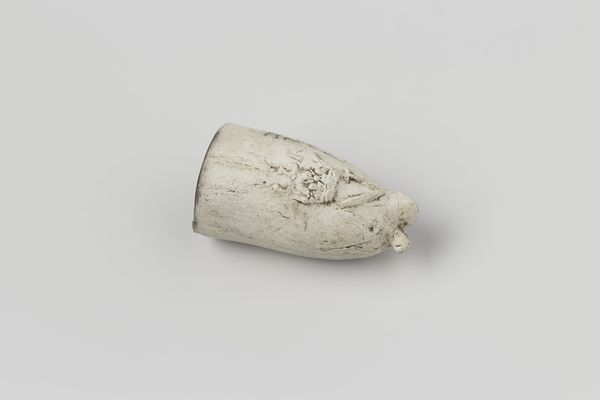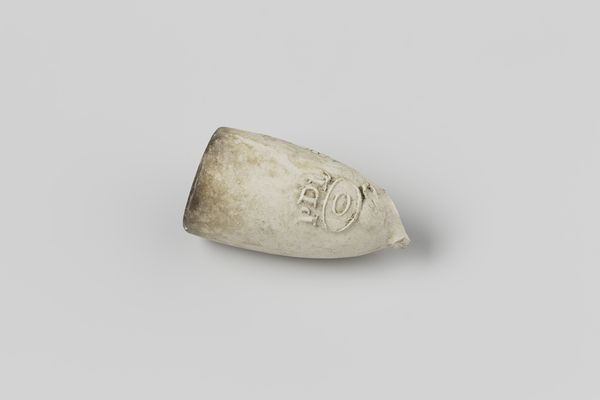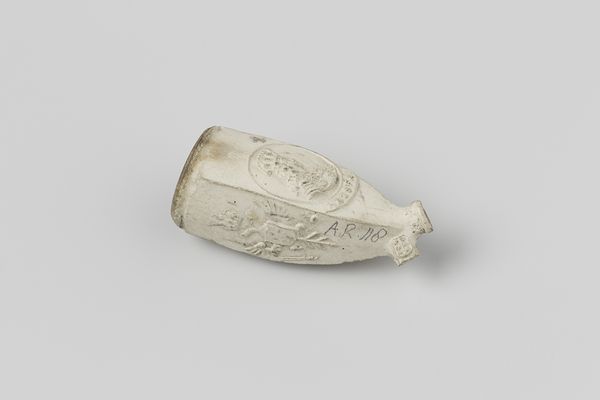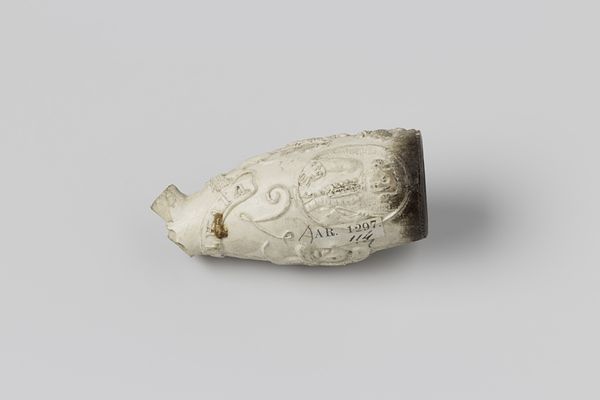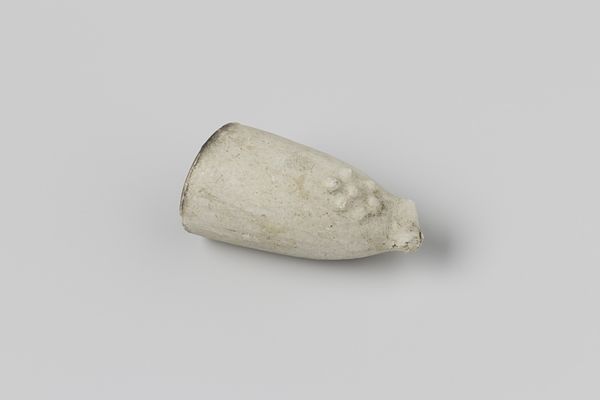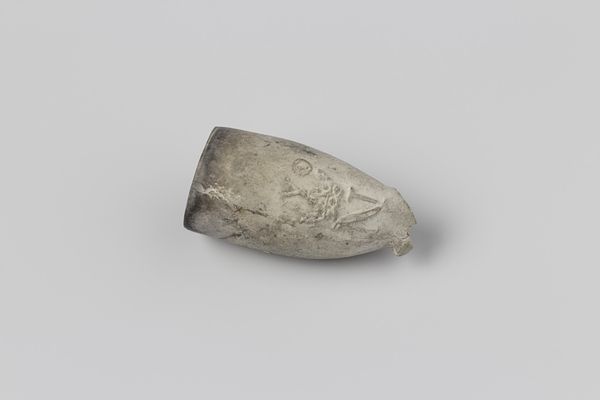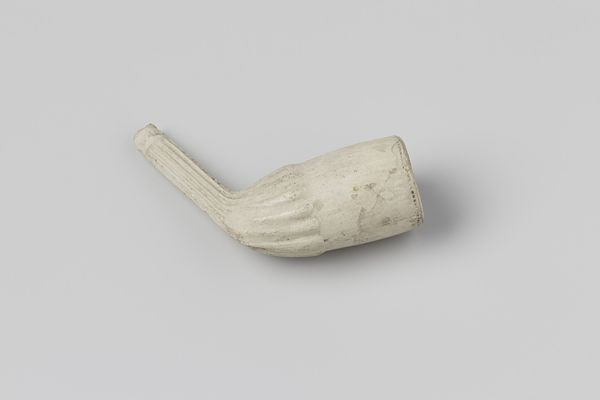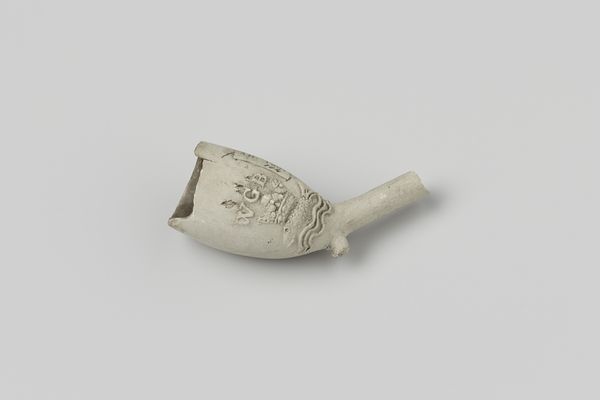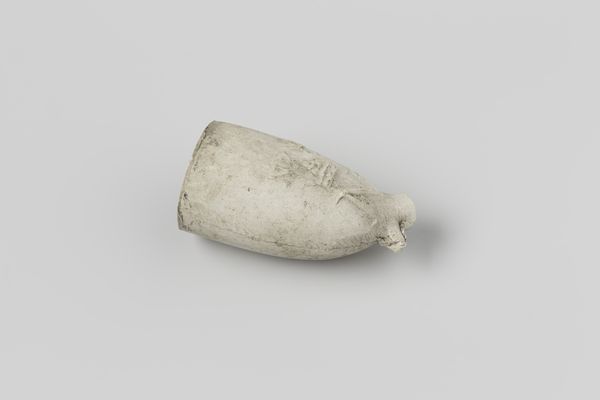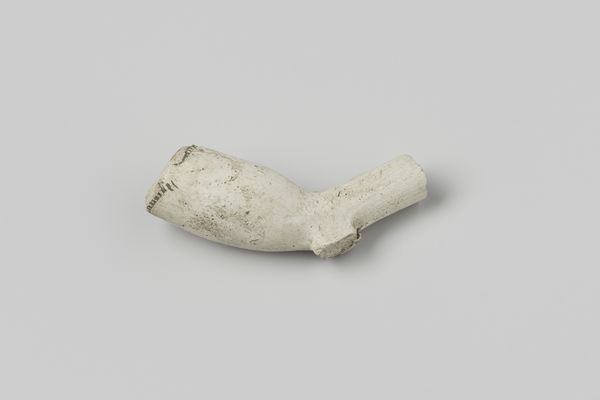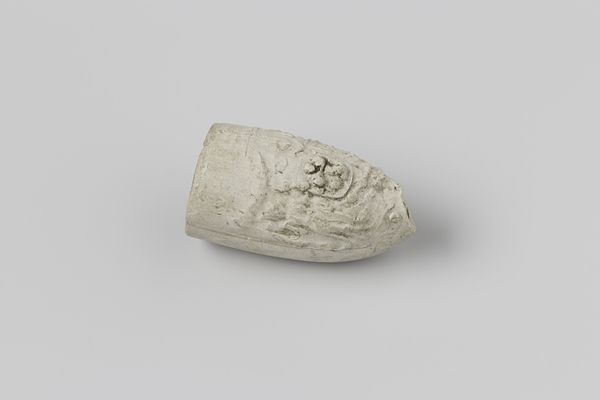
Dimensions: length 3.8 cm, width 2.0 cm
Copyright: Rijks Museum: Open Domain
Editor: Here we have a fragment of a pipe bowl dating from 1750-1785. It's earthenware, a fairly humble material. It makes me think about the everyday nature of smoking, but it’s also so intricately decorated. How do you interpret this object? Curator: This small fragment speaks volumes about global trade, colonial exploitation, and evolving social habits. The clay itself likely originated from specific regions, maybe even transported via complex trade routes reliant on forced labor. How does understanding its material composition challenge our perception of decorative art? Editor: It’s strange to think about something seemingly innocuous as linked to global systems of production. The delicate decoration, almost like a fluted column, feels very distant from that. Does the choice of earthenware, instead of, say, porcelain, affect its value as an artifact? Curator: Absolutely. Earthenware signals wider access and affordability. It wasn't necessarily intended for an elite audience. So, we have to ask, what impact does mass production have on artistic value? Was this pipe bowl, or ones like it, intended as art, or a readily consumed, disposable object? Editor: I hadn't considered its potential disposability! So even something with decorative elements could be quite transient. It’s changed my perspective. Curator: Considering the material and the production methods, what appears decorative may reveal the broader networks of exchange and power dynamics that shaped its creation and consumption. Examining its brokenness provides insights into its use, its history, and its journey to the museum today.
Comments
No comments
Be the first to comment and join the conversation on the ultimate creative platform.
